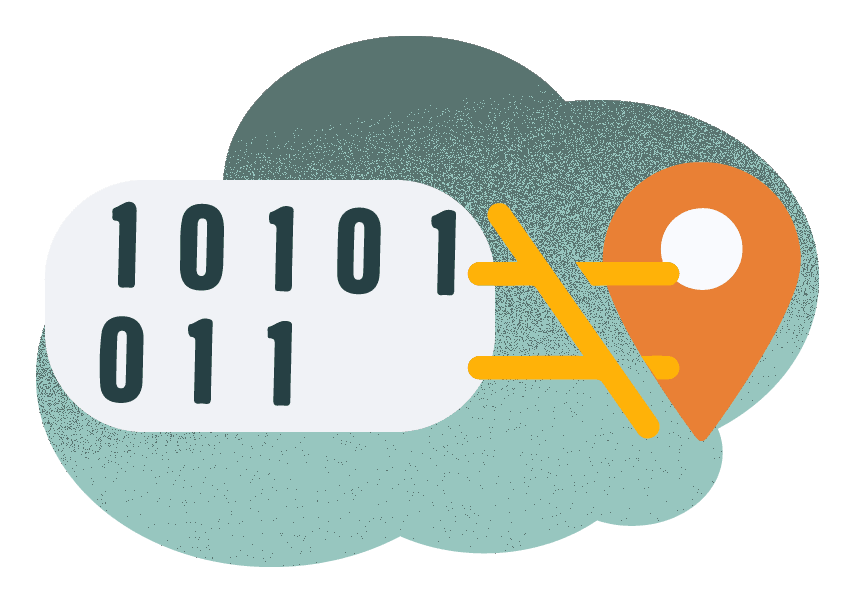How Location Data Powers Digital Marketing
Check out our guide for marketers and advertisers on some of the best ways to leverage location based audiences for attribution, retargeting, and more!
By Joseph Green
For the modern marketer, there is no tool more important than quality data. This is particularly true of location data. Simply put, location data gives a window into the real world behavior of target audiences, adding an unprecedented level of precision to any campaign. A marketer working with the right location data provider will generate more leads, drive more conversions, and reach more relevant customers. This kind of edge is indispensable to anyone hoping to compete in today’s ever-evolving marketing landscape.
So how does it work? Read more to get insights into the fast-growing world of location data, and learn about all of the applications it has to offer marketers and advertisers.
Not All Data is Created Equal.
Although location data is a relatively young industry, there are a variety of technologies and approaches that different companies have taken. Two of the most common ways that location data is collected are:
- Bidstream: Bidstream data collection occurs when advertisements are delivered to a mobile device. When ads are delivered, they may also collect some information about the device in return, including its current geographic location. This data is then repackaged and sold to marketers. While bidstream can present a staggering amount of data — think of how many devices see ads at any given moment — there is often a sacrifice in terms of quality. 80% of bidstream data has to be thrown out right away, meaning that marketers have their work cut out for them to turn a mass of data into actionable insights.
- SDK: Short for “Software Development Kit,” this is a piece of software built into consumer applications that have a real location use case, e.g. a weather app, or a restaurant finder. The SDK collects first party data from users who consent to share their locations. In exchange, the data collector pays the app publisher a fee. This provides app publishers with a self-sustaining revenue stream without compromising the quality of their app with intrusive advertisements. Although SDKs can collect highly accurate data, they are also more difficult to scale.
Bidstream and SDK are not the only ways to collect location data, but they represent the basic balancing act at the heart of the industry: quality vs. quantity. Whereas bidstream presents an appealing quantity of data, quality is not always guaranteed. Conversely, SDK offers the possibility of extremely high quality data — 70% of X-Mode’s SDK-sourced panel, for example, is accurate to within 20 meters or less — but it can take some time to build out scale. While it is ultimately up to the individual marketer which approach they go with, at X-Mode we believe that the effort it takes to build out a comprehensive panel is worth it for the added quality of the resulting data.
How to Use Location Based Audiences
Once you have access to users’ location data, there are a variety of ways you can leverage it to enhance your overall strategy. The following is certainly not a comprehensive list; the use of location is only limited by the ingenuity of the marketer and the quality of the panel. However, some of the most effective ways to use location data for marketing and advertising include:
- Custom Audiences: Location based audiences can exponentially improve the reach of your campaign. For example, say you want to inform customers about a big sale at a pet store. While a traditional marketing campaign may target those who have engaged with the brand on social media platforms, a location-informed campaign can target devices that display real world behavior associated with pet owners. This could include visits to competing stores, as well as visits and dwell time at parks or animal shelters. The resulting audience boasts a degree of precision unavailable to marketers not working with location data.
- Campaign Attribution: Sure, you can deliver a great ad campaign. But how do you make sure that it’s reaching the right audience, or resulting in the conversions/actions you want? One way to improve attribution and measure campaign effectiveness is with location data. Whether that means using a geofence to measure increases in foot traffic at a retail location following a campaign, or analyzing mobile device movement after exposure to an ad, location data adds a crucial, real world perspective to ad attribution. With it, campaigns can be updated and optimized in real time to ensure future success.
- Out of Home Advertising: One of the most obvious ways that location data intersects with digital marketing is in the Out of Home (OOH) sector. OOH, of course, refers to billboards, kiosks, and other physical advertisements that reach consumers on the move. While previously this area of advertising may have been less personalized, advances in location data and IoT mean that OOH can now be connected with other advertising channels. An advertiser can target devices in proximity to a billboard/kiosk using geofencing, or even attribute increased foot traffic to a new OOH campaign. With location data, there is no divide between the physical and digital world.
How to get Started with Location Data
It should be pretty clear by now that location data is a crucial asset for any marketer to add to their toolbelt. Whether it is for building custom audiences, measuring campaign performance, or launching a successful OOH campaign, this data is the secret ingredient to more effective marketing in 2020. The simple truth is that any organization that isn’t already using precise location user data should start right away.
There is no reason to feel intimidated by this, however. While it takes some time and know-how to start effectively leveraging location data and real-time location based audiences, the results are more than worth the investment. Even if you have no experience working with these kinds of data sets, the right location provider will know how to find a strategy that works for you. Reach out to X-Mode today to chat about the possibilities location data can offer your marketing strategy; before long, you won’t know how you lived without it.








